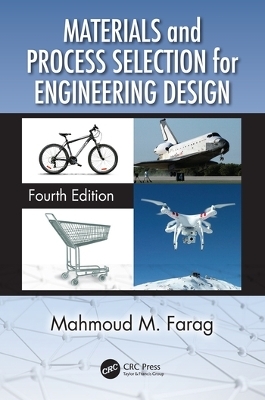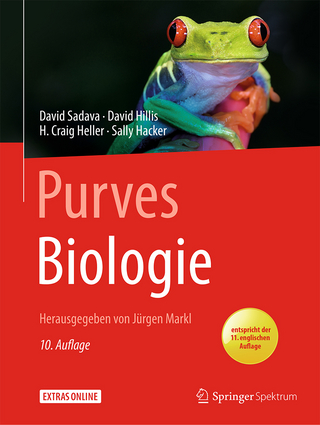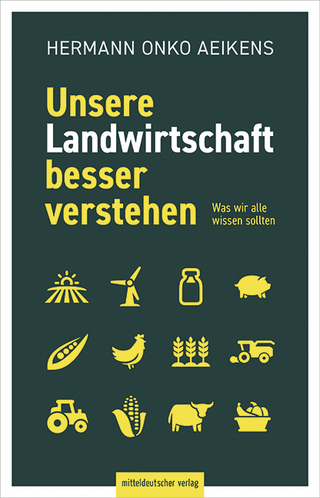
Materials and Process Selection for Engineering Design
CRC Press (Verlag)
978-0-367-41947-9 (ISBN)
Introducing a new engineering product or changing an existing model involves developing designs, reaching economic decisions, selecting materials, choosing manufacturing processes, and assessing environmental impact. These activities are interdependent and should not be performed in isolation from each other. This is because the materials and processes used in making a product can have a major influence on its design, cost, and performance in service. This Fourth Edition of the best-selling Materials and Process Selection for Engineering Design takes all of this into account and has been comprehensively revised to reflect the many advances in the fields of materials and manufacturing, including:
Increasing use of additive manufacturing technology, especially in biomedical, aerospace and automotive applications
Emphasizing the environmental impact of engineering products, recycling, and increasing use of biodegradable polymers and composites
Analyzing further into weight reduction of products through design changes as well as material and process selection, especially in manufacturing products such as electric cars
Discussing new methods for solving multi-criteria decision-making problems, including multi-component material selection as well as concurrent and geometry-dependent selection of materials and joining technology
Increasing use of MATLAB by engineering students in solving problems
This textbook features the following pedagogical tools:
New and updated practical case studies from industry
A variety of suggested topics and background information for in-class group work
Ideas and background information for reflection papers so readers can think critically about the material they have read, give their interpretation of the issues under discussion and the lessons learned, and then propose a way forward
Open-book exercises and questions at the end of each chapter where readers are evaluated on how they use the material, rather than how well they recall it, in addition to the traditional review questions
Includes a solutions manual and PowerPoint lecture materials for adopting professors
Aimed at students in mechanical, manufacturing, and materials engineering, as well as professionals in these fields, this book provides the practical know-how in order to choose the right materials and processes for development of new or enhanced products.
Dr. Mahmoud Farag received a B.Sc. degree in mechanical engineering from Cairo University and an M.Met. and Ph.D. from Sheffield University, United Kingdom. He is currently Professor of Mechanical Engineering at the American University in Cairo (AUC). Dr. Farag’s area of academic interest is in engineering materials and manufacturing and has published five textbooks, edited one book, and written several chapters for engineering books. He has also authored and co-authored more than 100 papers in academic journals and conference proceedings on issues related to the effect of microstructure on the behavior of engineering materials and materials from natural sustainable resources. His work is in biodegradable composite materials, materials and processes for contemporary sculpture, and using quantitative methods in selecting materials and processes for engineering applications. In addition to his academic work, Dr. Farag has wide industrial and consulting experience. Dr. Farag has more than 40 years of teaching experience and has taught a variety of materials courses on different levels ranging from introductory overview to sophomore/junior students to advanced topics to students pursuing their master’s degree. He has also taught manufacturing courses with heavy emphasis on how processing affects the properties of materials. One of Dr. Farag’s favorite courses, which he created at AUC and has written several textbooks for, is materials selection. This is a capstone course for mechanical/materials engineering senior students that integrates economic analysis with product design and material and process selection. Dr. Farag was visiting scientist/scholar at the University of Sheffield (United Kingdom), MIT and University of Kentucky-Lexington (United States), Aachen Technical University (Germany), and Joint Research Center, Commission of the European Communities (Ispra, Italy). He is a member of the American Society of Mechanical Engineers, the Materials Information Society, ASM International, United States; the Institute of Materials, Minerals & Mining, United Kingdom; and the Egyptian Society for Engineers. He is listed in Marquise Who’s Who in the World, Who’s Who in Science and Engineering, and Who’s Who in Finance and Industry. Dr. Farag is a recipient of the Egyptian State Award for promotion of Science and the First Order of Merit in Arts and Sciences.
1. Product Design and Development in the Industrial Enterprise. Part I Performance of Materials in Service: 2. Failure Under Mechanical Loading. 3. Corrosion, Wear, and Degradation of Materials. 4. Selection of Materials to Resist Failure. Part II Relationship between Design, Materials, and Manufacturing Processes: 5. The Nature of Engineering Design. 6. Effect of Material Properties on Design. 7. Effect of Manufacturing Processes on Design. Part III Selection and Substitution of Materials and Processes in Industry: 8. Economics and Environmental Impact of Materials and Processes. 9. The Materials Selection Process. 10. Materials Substitution. 11. Case Studies in Materials Selection and Substitution. Part IV Appendices: Metallic Materials: Classification, General Characteristics, and Properties. Polymers: Classification, General Characteristics, and Properties. Ceramic Materials: Classification, General Characteristics, and Properties. Composite Materials: Classification and Properties. Semiconductors and Advanced Materials. Conversion of Units and Hardness Values. Glossary. Index.
| Erscheinungsdatum | 15.01.2021 |
|---|---|
| Zusatzinfo | 156 Tables, black and white; 150 Illustrations, black and white |
| Verlagsort | London |
| Sprache | englisch |
| Maße | 156 x 234 mm |
| Gewicht | 453 g |
| Themenwelt | Naturwissenschaften ► Biologie |
| Technik ► Maschinenbau | |
| Technik ► Umwelttechnik / Biotechnologie | |
| ISBN-10 | 0-367-41947-5 / 0367419475 |
| ISBN-13 | 978-0-367-41947-9 / 9780367419479 |
| Zustand | Neuware |
| Haben Sie eine Frage zum Produkt? |
aus dem Bereich


